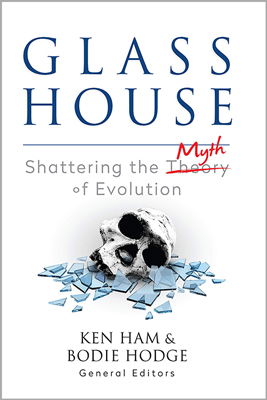Chapter 17
Whale Evolution
For those who remember sitting in 10th grade biology class in high school, or freshman biology in college, if asked which animal showed the most clear and definitive case for evolution, including transitional (or intermediate) forms, the whale evolution series would be among the first to spring to mind.
Introduction: Whale Evolution
The images of hyena-like terrestrial animals, whose feet morph into webbed feet and then flippers, who gradually lose their hind limbs, grow larger, develop fins and flukes, and whose nostrils shift from the front of their heads onto the top of their heads can readily spring to mind. Even those who have long forgotten their biology classes can recall seeing these representations in museums, zoos, or aquariums.
How watertight is this transitional series? And what of new genetic claims that hippos share more common DNA with whales?
But how watertight is this whale evolutuion transitional series? And what of new genetic claims that hippos share more common DNA with whales? Is this a slam dunk for evolution, proving that one kind of animal can change into another via natural selection and mutations? It sure is presented that way! But let’s take a closer look at the “steps” in this transitional series. Let’s examine some of the problems which are glossed over and the select anatomy which is touted as being proof of common ancestry.
Pakicetus: Possible Stage of Whale Evolution?
One of the first animals encountered in this series is Pakicetus. Initially it was presumed to be a semi-aquatic mammal based on having triangular teeth and a bony wall around its ears (which is unlike other terrestrial mammals). In 2001, an almost complete skeleton was discovered, and it was an entirely terrestrial animal. But it is still listed as the first whale in most textbooks.
One of the characteristics which is listed as being whale-like (its triangular teeth) has been found in other terrestrial mammals not considered ancestral to whales, like Zhangheotherium quinquecuspidens1 an extinct symmetrodont2 and Cynogale bennettii,3 a living type of civet. Additionally, further studies of Pakicetus’ ear (even while proclaiming it a transitional form) have shown that it was more suited for hearing sounds in the air rather than in water.4
Ambulocetus: Another Stage of Whale Evolution?
The next animal usually shown in the whale evolution series is Ambulocetus. Even though it is a quadruped, it is often depicted as semi-aquatic and often (like a crocodilian) as an ambush predator grabbing animals which venture near the water for a drink. But even sites promoting Ambulocetus as semiaquatic admit that it could walk on land and are unsure of its aquatic mode of locomotion:
Ambulocetus also had front limbs ending with flexible wrists and fingers, and its strong hind limbs had even bigger feet. In water it may have swum like an otter, or like a dog. Or it may have walked like modern hippos along the bottom. Its legs could have supported its full weight, but on land Ambulocetus was probably clumsy and slow.5
Ambulocetus is listed as whale-like due to supposedly having a similar (to whales) sigmoid process on the auditory bulla and a reduced zygomatic arch (cheekbone). But both of these characteristics may have been overstated, and other researchers have questioned whether these characteristics might not be unique to Ambulocetus and might be characteristic of other mesonychids.6
Protocetids: Maiacetus, Rodhocetus, and Kutchicetus
Another group often portrayed in this series are the protocetids. One of these protocetids is Maiacetus inuus (mother whale) whose fossil thus was named because a baby Maiacetus was found inside the mother’s fossilized ribcage.
Based on the position of the baby, it appeared that it was going to be delivered head-first (not tail-first as in whales), suggesting that the Maiacetus might have given birth on land (like modern pinnipeds).7 Additionally, Maiacetus was a quadruped and, in some fossil specimens which were more complete, still had hips that were attached to its vertebral column.8
Next on the list are Rodhocetus and Kutchicetus, both of which are now usually depicted as otter-like and semi-aquatic.9 Cetus and Cetids come from the Latin for whale by the way.
Rodhocetus kasrani was touted as having a fluke (whale tail), and yet four legs. This initially sounds like a great missing link. However, the University of Michigan’s display of Rodhocetus (one of the only places to see the fossil in the world) doesn’t have the end of the tail! There is no typical ball vertebra to be observed, which is necessary for fluke tails.10
The discoverer of Rodhocetus even made a glaring admission. He said, “I speculated that it might have had a fluke. . . . I now doubt that Rodhocetus would have had a fluked tail.”11 Furthermore, the hand and feet fossils of Rodhocetus were also missing, which causes a problem for interpreting them as flippers.12 However, subsequent findings of a related species (Rodhocetus balochistanensis) contained both hand and foot bones (fore and hind-limbs).13 The fore-limbs were much shorter than the hindlimbs and contained 5 digits, the middle three of which were weight-bearing and hooved.14 It is assumed that both sets of limbs were webbed and that the animal was semi-aquatic moving on land like a sea lion and swimming in the water by pelvic paddling with its hindlimbs like a Russian Desman.15 So the essential features that most paleontologists tout as being whale-like on Rodhocetus are highly interpretive and the swimming method dictated by the anatomy of the find is somewhat contradictory to what was expected. That’s a big problem.
Though rarely mentioned, and rightly so, Kutchicetus was very similar in size and anatomy to otters. The primary reason that it is sometimes included in a whale series is to try to provide a transitional series for swimming motion—undulatory movements. So it isn’t the anatomy that transitionalists are looking at with this creature (as the skeleton appears to show that it was fully capable of walking on land16) but instead its method of locomotion. But in this case, apparently the fossils don’t tell the whole tale, and a heavy dose of evolutionary interpretation must be added.
Basilosaurus and Durodon - Examples of Whale Evolution?
Basilosaurus is often depicted next in the whale evolution series along with Durudon. Unlike all the previous “early whales” on the list, both Basilosaurus and Durodon were fully aquatic. Creationists and evolutionists totally agree here.
Evolutionists are divided though on these basilosaurids and their place in whale evolution. Evolutionist Barbara J. Stahl stated, “The serpentine form of the body and the peculiar serrated cheek teeth make it plain that these archaeocetes could not possibly have been ancestral to any of the modern whales.”17
Dr. Lawrence Barnes has said, “Basilosaurus existed at a time when baleen-bearing mysticetes are known to have existed and echo-locating odontocetes are presumed to have existed.”18
Creation scientists also are divided on Basilosaurus and Durodon. Some think it is possible that the extinct basilosaurids were of the same created kind as today’s toothed whales, or perhaps they were another created kind that has become extinct.
Both of the above basilosaurids have greatly reduced hind limbs. These are mentioned as being functionless and used as proof that as whale ancestors became more aquatic, they lost their hind limbs and evolved fins and flukes. Modern whales are often described in evolutionary textbooks as having “vestigial hipbones,” which is often touted as proof of the whale evolution series. But a 2014 article in the journal Evolution showed that there is a perfectly designed function after all.19
Researcher Brian Thomas of the Institute for Creation Research, commenting on this Evolution article, says, “These results show that male whales use pelvis bones that were well crafted for anchoring reproductive organs — not for anchoring limbs. Whale hips are not vestigial.”20
Discussion and Conclusion about Whale Evolution
In light of how much attention evolutionary textbooks pay to whale evolution . . . it seems uncanny that newer college courses on the subject . . . strip away the notion that there is a linear progression.
In light of how much attention evolutionary textbooks pay to whale evolution and its iconic status, it seems uncanny that newer college courses on the subject go to great pains to strip away the notion that there is a linear progression of transitional whale ancestors in the fossil record. A course at the University of Indiana has this warning:
CAUTION: Unfortunately, students may come away from this lesson with the mistaken conclusion that each of the intermediate whale forms were in the direct (lineal) line of descent between the land-dwelling tetrapods and fully aquatic whales. IN REALITY, it is most likely that these “transitional forms” were only “collateral” (cousin-like) ancestors, but showing features that were likely found in their “cousins” that did evolve into modern whales. This subtle distinction may seem unimportant, but to assume that fossils generally fit into a lineal (direct) line of descent conveys the erroneous impression of the long-outdated “Ladder of Evolution” concept. Rather, students should recognize that what we are seeing are the vestiges of many side branches in a diverse BRANCHING TREE of evolution.
Furthermore, students should focus more on the mosaic accumulation over time of a series of new features modified (derived) from ancestral features over time, not the species per se. The fossil remains collected simply reveal that those respective features existed in those related species at that period of time.21
They even offer a provisional phylogeny diagram22 which shows these “relationships.” Likewise, the University of West Virginia includes several “evolutions” of the whale evolution series on their online course page. 23 However, even in these newer branching tree diagrams, they tend to gloss over how toothed and baleen whales separated, and what they do show seems contradictory. It also appears from the UI provisional phylogeny diagram that modern baleen whales gave rise to modern toothed whales, when all of the older “cousins” on the evolutionary tree were toothed. Even new research has shown that toothed suction feeders24 and gap-toothed (but still having plenty of teeth) “filter” feeders25 were (supposedly) the direct ancestors of modern baleen whales. This is certainly not the smooth and neat transitional picture which is painted for the average high school and college student.
As biologist Richard Sternberg has noted, many changes would have been necessary to convert a land-mammal into a whale, including:
- Emergence of a blowhole, with musculature and nerve control
- Modification of the eye for permanent underwater vision
- Ability to drink seawater
- Forelimbs transformed into flippers
- Modification of skeletal structure
- Ability to nurse young underwater
- Origin of tail flukes and musculature
- Blubber for temperature insulation26
Most of these are multi-step processes, and ones which would need to be coordinated in order for the organism to survive and reproduce. However, another drastic change which is completely overlooked in the secular literature is that the newest hypotheses on whale evolution point to an evolutionary lineage with artiodactyls (even-toed ungulates, with hippos being the closest living relative), the vast majority of which are herbivores. The only omnivores (pigs and peccaries) are considered the furthest removed from whale ancestry.
In addition to having to account for drastic morphological differences between medium-sized land animals to large marine ones, we are left with the added problem of why a primarily herbivorous group of animals would venture to the water in order to eat fish (or other aquatic animals), and why all of the subsequent descendants would be obligate carnivores. Indeed, the hypothesized closest living relatives after hippos are the ruminants, all of which have specialized stomachs for digesting plant matter.
Therefore, a complete redesign of the gastrointestinal tract had to have occurred before these “early whales” took to the water. This extremely drastic physiological change is either ignored or just acknowledged as occurring in secular literature. Alternatively, mention of opportunistic carnivory in some hippopotamuses is viewed as being potentially evolutionary linkage to the carnivory seen in whales.27 But there is a vast difference between opportunism and obligate carnivory, and there is also a vast difference between the digestive system of hippos and whales (especially toothed whales). Hippos utilize fermentation digestion in the first two stomachs,28 whereas whales utilize muscular contractions in their first stomach to break down food.29
Another such irreducibly complex set of features (in addition to the ones listed above) was the coordination among:
[T]he comb-like baleen to filter out food, expandable “ventral groove blubber” with cartilaginous support bars that open like a Chinese fan, a newly discovered sensory organ, a split jaw that is loosely connected to the skull, and vibrissae (long stiff hairs) along the chin to sense prey. The whale’s sensory organ detects pressures that its lower jaws endure when taking on so much water in their mouths. Without this key sensor, the animal’s jaw could rip apart.
Arctic and Antarctic oceans supply some of the best feeding areas for rorqual species. How do these enormous sea creatures keep from freezing as they engulf hundreds of gallons of cold ocean water? A countercurrent heat exchange arrangement of blood vessels throughout their enormous tongues protects their core body temperature.
What if all these whale feeding features were in place, but the creature had standard nerve packing? If this were the case, then when the whale’s mouth ballooned and its tongue extended the nerve would break, severing the vital pressure signal from that special sensory organ.30
It seems like the whale benefitted from some extraordinary “luck” in the evolutionary paradigm. All of the necessary components (just to feed) came together by random processes, and they came at just the right time. And all of this “guided natural selection” came about with no clear direct lineage pointing to modern whales, just lots of disconnected side branches.
Unlike the current story of whale evolution, which features lots of “cousins” but no “parents,” the biblical picture is clear. Whales, both toothed and baleen, were created on day 5 of creation week. They did not evolve from a land ancestor: they actually predated land animals (by a single day). And while some whales may have grown larger31 since the Ice Age, they are still whales.
Glass House
Twenty-seven questions with answers that refute the classic arguments for evolution/millions of years taught in public schools and colleges.
Read Online Buy BookFootnotes
- https://www.cell.com/current-biology/pdf/S0960-9822(98)70174-5.pdf, p. r-285.
- https://pdfs.semanticscholar.org/f49e/b498515c8cf669c24884e66dc55246d0219a.pdf, p. 168.
- Richard Owen, On the Anatomy of Vertebrates . . . Mammals (London, England: Longmans, Green and Company, 1868), p. 131.
- https://www.nature.com/articles/361444a0.
- . http://stories.anmm.gov.au/whale-evolution/.
- Annalisa Berta, “What Is a Whale,” Science 263 (January 14, 1994): 180–181.
- http://scienceblogs.com/laelaps/2009/02/03/maiacetus-the-good-mother-whal/.
- Ibid.
- . http://pages.geo.wvu.edu/~kammer/g231/Whales.pdf.
- Carl Werner, Evolution: The Grand Experiment (Green Forest, AR: New Leaf Press, 2007), p. 139–143.
- Ibid. and Interview with Dr. Phil Gingerich, Paleontologist, University of Michigan, for video series “Evolution: The Grand Experiment,” conducted by Dr. Carl Werner, on August 28, 2001.
- Ibid. .
- Philip D. Gingerich, et al., “Origin of Whales from Early Artiodactyls: Hands and Feet of Eocene Protocetidae from Pakistan,” Science 293, (September 2001): 2241. https://www.researchgate.net/publication/11781254_Origin_of_Whales_from_Early_Artiodactyls_Hands_and_Feet_of_Eocene_Protocetidae_from_Pakistan
- Ibid.
- For an illustration of the Russian Desman swimming underwater, see this video: https://www.youtube.com/watch?v=N3BAWMndqEo
- B.J. Stahl, Vertebrate History: Problems in Evolution (New York: Dover Publications, Inc., 1985), p. 489.
- As recorded in an interview in Carl Werner, Evolution: The Grand Experiment, Vol. 1, 3rd edition (Green Forest AR: Master Books, 2014), p. 144.
- https://onlinelibrary.wiley.com/doi/epdf/10.1111/evo.12516..
- http://www.icr.org/article/vital-function-found-for-whale-leg.
- http://www.indiana.edu/~ensiweb/lessons/whale.ev.html, now available at Archive.org.
- http://www.indiana.edu/~ensiweb/lessons/whale.phylog.pdf, now available at Archive.org.
- http://pages.geo.wvu.edu/~kammer/g231/Whales.pdf.
- https://phys.org/news/2017-05-baleen-whales-ancestors-toothy-suction.html.
- https://www.cell.com/current-biology/fulltext/S0960-9822(17)30704-2.
- https://evolutionnews.org/2015/01/problem_5_abrup/.
- https://www.researchgate.net/publication/286035324_Carnivory_in_the_common_hippopotamus_Hippopotamus_amphibius; Implications_for_the_ecology_and_epidemiology_of_anthrax_in_African_landscapes, p. 196.
- https://onlinelibrary.wiley.com/doi/pdf/10.1111/j.1365-2028.1973.tb00070.x.
- . https://bluewhaleztt.weebly.com/digestive-system.html.
- http://www.icr.org/article/clever-construction-rorqual-whales.
- https://answersingenesis.org/aquatic-animals/how-and-when-did-baleen-whales-get-solarge/.
Recommended Resources

Answers in Genesis is an apologetics ministry, dedicated to helping Christians defend their faith and proclaim the good news of Jesus Christ.
- Customer Service 800.778.3390
- © 2024 Answers in Genesis






